How deaf dancers embrace ballet through movement and visual cues involves using visual signals and specialized techniques to master choreography and rhythm. This article explores these methods, highlighting how deaf dancers excel in ballet.
Key Takeaways
- Deaf dancers leverage their visual strengths and American Sign Language (ASL) to enhance their ballet performances and artistic expression.
- Visual cues, including mirrors and lighting, are crucial in training deaf dancers, helping them maintain rhythm and precision without relying on audio cues.
- Creating an inclusive environment through adapted teaching techniques and technology is essential for the success of deaf dancers in ballet.
The Unique Strengths of Deaf Dancers in Ballet
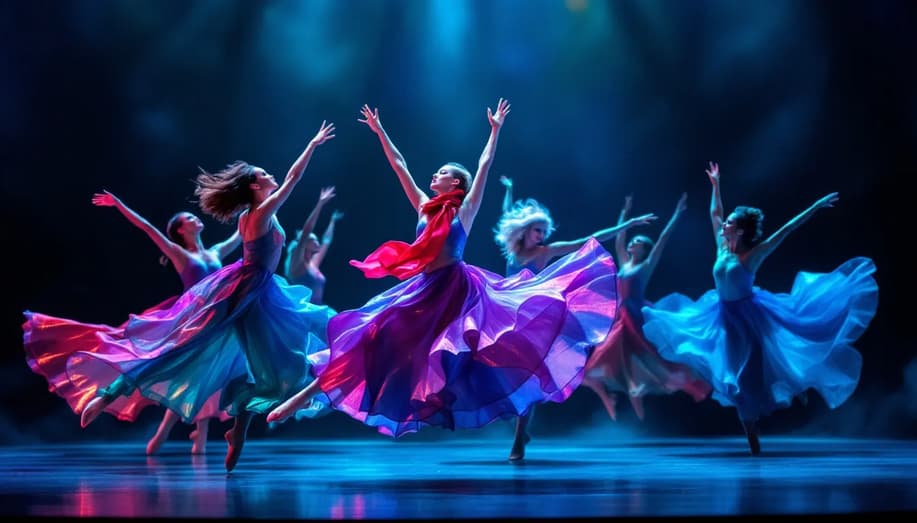
Deaf dancers possess a remarkable ability to utilize their visual senses to communicate and keep time, which significantly enhances their performance. Some dancers are hard of hearing and may use different strategies to engage with music and movement, adapting to their levels of hearing. Their keen visual learning aligns perfectly with the physical nature of ballet training, allowing them to grasp choreography with precision and clarity. This heightened visual awareness is a tool and a strength that sets them apart on the dance floor.
Additionally, facial expressions in American Sign Language (ASL) add expressiveness to their ballet performances. These dancers can convey emotions and narratives through their faces in a powerful and nuanced way, making their performances deeply moving for audiences. The integration of ASL into ballet not only aids in communication but also enriches the artistic expression of the dance.
Some deaf and hard-of-hearing dancers can distinguish bass tones better, aiding their perception of rhythm and tempo. While the music may not be heard traditionally, dancers can still perceive rhythm through vibrations or visual cues. These strengths collectively contribute to the exceptional artistry and performance quality of deaf dancers in ballet.
Visual Cues in Ballet Training
Visual cues are essential in the training and performance of deaf dancers. Flashing lights, torches, and cue cards are some of the tools used to help them stay in sync with the rhythm and timing of the music. These cues act as visual counterparts to auditory signals, allowing deaf dancers to perform with the same precision as their hearing peers. The visual cue provided by these tools enhances their overall performance.
Using mirrors and sign language in dance classes is another effective technique. Mirrors allow dancers to observe their movements and those of their peers, facilitating self-correction and synchronization. Conversely, sign language enables clear and direct communication between dance teachers and students, ensuring that instructions and feedback are understood accurately. Teachers play a crucial role in adapting their communication methods and providing visual cues to support deaf dancers in the studio.
The Gallaudet Dance Company highlights the pivotal role of visual cues in maintaining rhythm and timing. By emphasizing the visual aspects of dance, these dancers can perform complex choreography without relying on musical accompaniment. Integrating ASL into dance choreography further fosters inclusion and enhances the emotional narrative conveyed through the dance. Studios often have visual aids and accessible features to support deaf dancers.
Movement: The Language of Dance
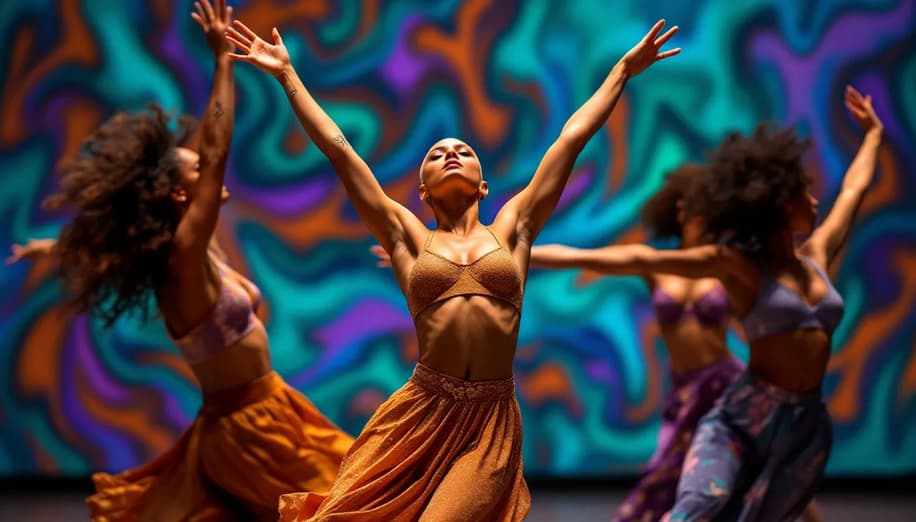
Movement is a powerful language for deaf dancers, transcending the need for music. Their performances showcase unique expressiveness, using facial expressions and body language to convey emotions. This deep emotional engagement enables them to interpret movements and expressions profoundly, resonating with audiences. Other deaf dancers use movement and visual cues to communicate and sync during performances.
Choreographer Jo Dunbar emphasizes that dance is about expressing movement and emotion, rather than just the music. Deaf dancers excel in this aspect, relying on visual counting techniques and demonstrations by hearing peers to grasp rhythm and timing. Incorporating ASL into ballet performances further enhances their ability to tell a story through dance, making their performances rich and captivating.
Adapting Ballet Classes for Deaf Students
Adapting ballet classes for deaf students requires several key modifications for effective learning and communication. Adapting the class structure is important to ensure all students can participate fully and benefit from the instruction. Visual counting techniques are essential in helping deaf dancers grasp rhythm and timing, as they provide a clear and structured way to follow the music. Some dancers prefer to learn choreography using ASL and visual counting methods, which cater to their unique communication needs.
Using visual aids and sign language in choreography enhances communication and understanding in dance classes for deaf learners. These tools ensure clear and effective conveyance of instructions, minimizing misunderstandings and maximizing learning outcomes.
Physical adjustments like wheelchair ramps and closed captions are also crucial for creating an inclusive environment for deaf dancers and disabled people with disability. Dance teachers should ensure students can see their faces during lessons to facilitate better communication.
These adaptations make ballet classes more accessible and supportive for deaf students, allowing them to thrive and excel in their dance training and life. Adapting ballet classes for young students can also help nurture their confidence and creativity from an early age.
The Role of American Sign Language (ASL) in Ballet
American Sign Language (ASL) enhances communication and artistic expression in ballet. Integrating ASL into ballet performances allows deaf dancers to align their movements with sign language, blending dance and communication seamlessly. This fusion not only makes performances more inclusive but also adds depth to the emotional narrative conveyed through the dance.
The incorporation of Auslan into the choreography of ‘Under My Skin’ is an example of how sign language can be used aesthetically, rather than as a literal dialogue. This approach enriches the performance, making it more engaging and accessible for deaf and hearing audiences.
Success Stories: Deaf Dancers in the Ballet World
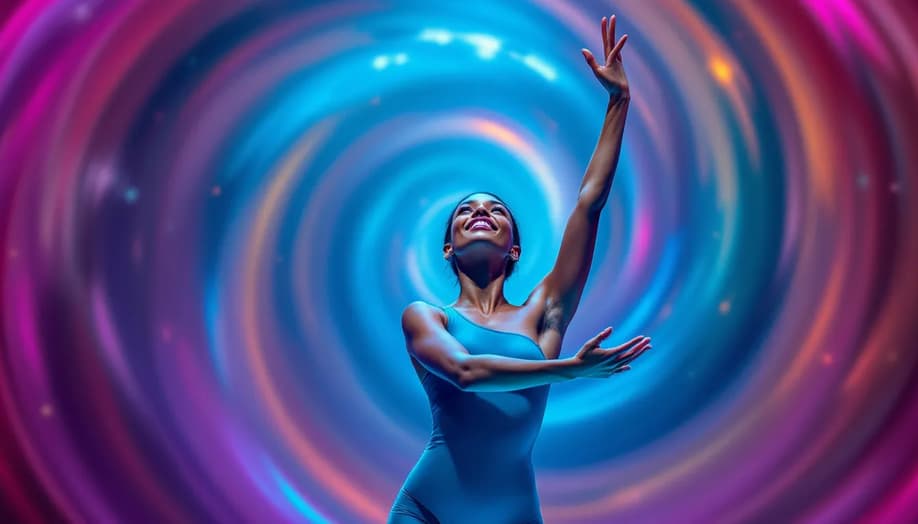
Success stories of deaf dancers in the ballet world are inspiring and motivating. Simoné Welgemoed, for instance, is recognized as the first and only profoundly deaf ballerina with a cochlear implant. Despite initial challenges, she found a supportive ballet instructor who helped her gain confidence and advocate for herself. Today, Simoné embraces her identity as a deaf ballerina and actively raises awareness about hearing disabilities.
Alice Sheppard, a renowned disabled dancer and choreographer, has inspired others through her groundbreaking work. Her performances and leadership in initiatives like the Dancing Disability Lab at UCLA have showcased the creativity and advocacy of disabled dancers, motivating both audiences and fellow artists.
The Gallaudet Dance Company exemplifies how deaf dancers can maintain rhythm and timing independently of musical accompaniment. Their performances demonstrate that deaf dancers can achieve excellence in ballet through dedication and innovative techniques at Gallaudet University. The fusion of ASL and dance creates a new artistic language, allowing for unique interpretations and exchanges between both forms. The company has performed internationally, including in Costa Rica, highlighting its members’ global reach and cultural exposure.
As the founder and pioneer of the Gallaudet Dance Company, Dr. Peter Wisher shaped its unique identity and legacy. The role of the assistant director, such as Gill-Doleac, has been crucial in providing leadership, mentorship, and supporting the company’s growth. Being a member of the Gallaudet Dance Company offers opportunities for personal and artistic growth, and members contribute significantly to the company’s ongoing success.
Additionally, dance companies like the Gallaudet dancers highlight the importance of inclusivity in the arts, as the way the Gallaudet Dance Company dances showcases their talent and creativity. Dedication and focus can help dancers build a successful professional career in the performing arts.
At UCLA, graduate students actively participate in academic programs and interdisciplinary initiatives related to disability and dance, supporting diversity, inclusion, and scholarly development.
Productions like ‘Under My Skin’ use visual elements and lighting cues to enhance the performance experience for both deaf and hearing audiences. The perception of deafness as a cultural experience is gaining recognition in the dance community, which may strengthen representation and inclusivity, and it has performed well, particularly among performers and the general public. These stories have inspired dancers and audiences, demonstrating the transformative power of inclusive dance.
Teaching Techniques for Deaf Ballet Dancers
Effective teaching techniques are essential for the success of deaf ballet dancers. A background in physical education can help instructors develop effective teaching techniques for deaf dancers by providing knowledge of movement, body awareness, and adaptive strategies. Instructors should teach by providing visual demonstrations to supplement verbal instructions, ensuring better understanding. Visual aids like charts or diagrams can also enhance the clarity of instructions for deaf students.
Facial expressions and hand signals are essential tools for communication between deaf dancers and their trained instructors. Visual counting helps deaf dancers express rhythm and timing, allowing them to perform with precision.
Understanding the unique needs of deaf dancers is essential for developing tailored teaching techniques that promote their success, as they have taught us valuable lessons in adaptability.
Overcoming Challenges on the Dance Floor
Deaf dancers often face unique challenges on the dance floor, requiring more effort than their hearing peers to stay in sync during performances. These challenges usually foster greater dedication and work ethic in their practice and performances. What may seem impossible at first can be achieved through determination and adaptability. A deaf person can develop a strong inner sense of timing through extensive practice rather than relying on auditory cues. Additionally, deaf people can inspire others through their resilience and creativity.
Choreographer Brandon Kazen-Maddox describes representing sounds through ASL in dance as a unique communication strategy. This approach helps bridge the gap between the auditory and visual aspects of dance, enabling deaf dancers to perform with confidence and precision.
Building a Supportive Environment for Deaf Dancers
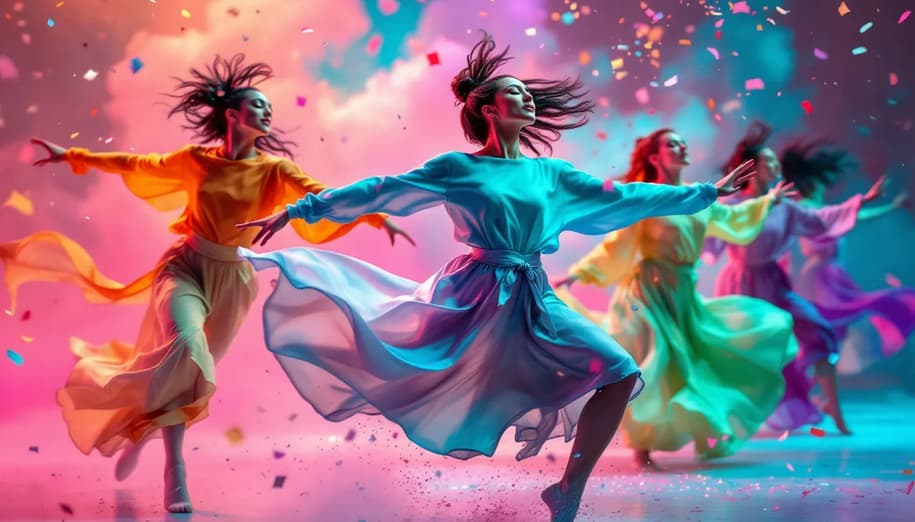
Creating a supportive environment for deaf dancers is essential for their success and well-being. Key elements include:
- Training instructors on understanding disabilities to create an inclusive environment in dance classes.
- The Disabilities Act ensures reasonable accommodations for disabled dancers.
- Reinforcing the importance of accessibility in dance studios. Accessible studios are crucial for supporting deaf dancers, as they provide an inclusive space that accommodates various needs and fosters participation.
Parents should meet with tutors to discuss support for their deaf child before starting performing arts sessions. Supportive, positive, and accessible involvement in performing arts programs fosters confidence and creative expression for deaf children. Inclusive dance programs offer transformative experiences, helping dancers with disabilities overcome challenges and find joy in movement. Members of dance companies support each other and contribute to a positive environment, encouraging growth and collaboration.
A positive and inclusive atmosphere in dance classes can significantly boost the confidence of deaf dancers. A distraction-free environment helps dancers focus on the teacher’s visual cues, enhancing their learning experience. Art for Art’s mission is to inspire dance that is accessible to everyone, emphasizing the need for supportive environments.
The Impact of Technology on Deaf Ballet Dancers
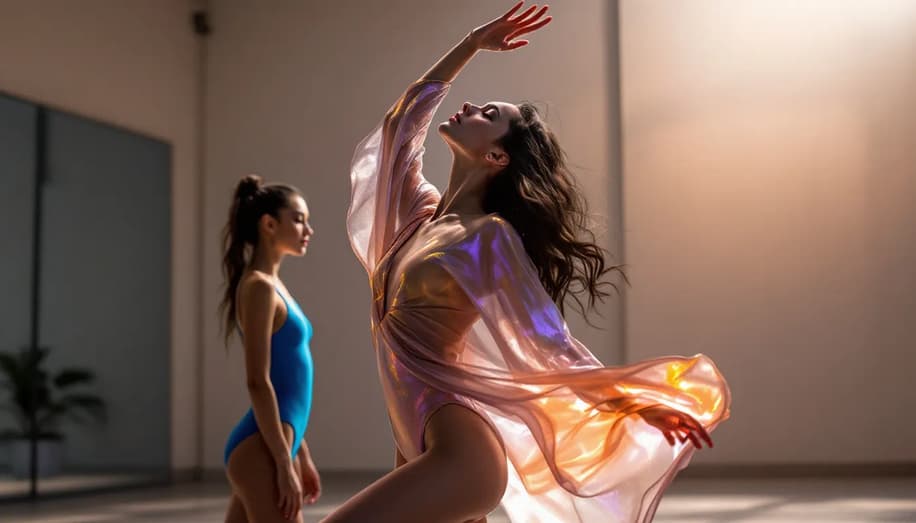
Technology significantly impacts the ballet experience for deaf dancers. Some examples include:
- Vibration-based timing alerts support deaf dancers during rehearsals.
- Tactile audio systems that allow dancers to feel music vibrations, enhancing their dance experience.
- The use of a SubPac, a tactile audio device, enables dancers to feel the vibrations of the music directly on their bodies, enhancing their connection with the rhythm.
Innovative teaching tools like radio aids facilitate better engagement and learning for deaf and hearing students in dance. Many dancers at Gallaudet Dance Company use hearing aids to enhance their experience in a hearing environment. Hearing aids and similar technology help deaf dancers bridge the gap with the hearing world, making it easier to participate and communicate in an environment dominated by sound. Deaf dancer Samantha Figgins experienced significant changes in her dancing after using hearing aids, allowing her to perceive musical nuances she previously could not.
Sound designer Russell Goldsmith creates a sound score focusing on lower frequencies, making it accessible for deaf dancers to feel rather than hear the music. Combining technological tools with observing hearing peers allows deaf dancers to effectively navigate and enhance their ballet experience.
Collaborations Between Deaf and Hearing Dancers
Collaborations between deaf and hearing dancers foster inclusivity and creativity in dance performances. The Delta Project, initiated in 2012, brings together deaf and hearing dancers to promote equal collaboration and creativity in dance. These partnerships lead to innovative performances that challenge traditional dance norms. Collaborations sometimes include hip hop elements, allowing deaf dancers to express themselves through various styles and connect with mainstream culture. The Urban Jazz Dance Company is an example of a group that supports diverse and Deaf dancers in collaborative projects, providing opportunities in urban and contemporary dance genres.
Through collaborations, deaf and hearing dancers learn from each other’s unique perspectives, enhancing their overall artistry like fellow dancers. The creative outcomes from these partnerships often lead to groundbreaking performances that push the boundaries of dance.
The Future of Deaf Dancers in Ballet
The future of deaf dancers in ballet is bright, with a growing focus on enhancing accessibility and inclusivity. Deaf choreographers like Bailey Anne Vincent use ASL as a natural part of their creative process, ensuring accessibility. Performances integrating ASL make the work more inclusive and provide a richer context for hearing audiences.
Initiatives by Art for Art aim to expand access and opportunities for people with disabilities in dance. Collaboration among educators, parents, and deaf professionals is crucial for creating a nurturing environment for young deaf dancers. The dance community is committed to building a future that welcomes and embraces deaf dancers.
Summary
The journey of deaf dancers in the ballet world is a testament to their resilience, creativity, and artistry. They are breaking barriers and redefining the dance landscape by utilizing their unique strengths, embracing visual cues, and leveraging technology. With supportive environments and innovative teaching techniques, the future of deaf dancers in ballet is brighter than ever. Let us celebrate their achievements and continue to foster an inclusive and accessible dance community.
Frequently Asked Questions
How do deaf dancers keep time with the music?
Deaf dancers effectively keep time with music by relying on visual cues, counting techniques, and feeling vibrations through tactile audio systems. This allows them to connect with the rhythm and express themselves through dance.
What role does American Sign Language (ASL) play in ballet for deaf dancers?
American Sign Language (ASL) plays a crucial role in ballet for deaf dancers by enhancing communication and artistic expression, enabling them to align movements with sign language and convey emotions more effectively. This integration enriches their performance and connection to the art form.
How do technology and hearing aids impact deaf dancers in ballet?
Technology and hearing aids significantly enhance the experience of deaf dancers in ballet by enabling them to feel the music and connect deeply with the rhythm, ultimately improving their performance and artistic expression.
What are some success stories of deaf dancers in the ballet world?
Simoné Welgemoed, a profoundly deaf ballerina with a cochlear implant, and the Gallaudet Dance Company highlight the potential of deaf dancers to succeed in ballet through innovative techniques and passion. Their stories inspire a new understanding of inclusivity in the arts.
How can ballet classes be adapted for deaf students?
Ballet classes can be effectively adapted for deaf students by incorporating visual aids, visual counting techniques, and integrating sign language. Additionally, making physical adjustments, such as wheelchair ramps, can enhance accessibility and inclusivity.